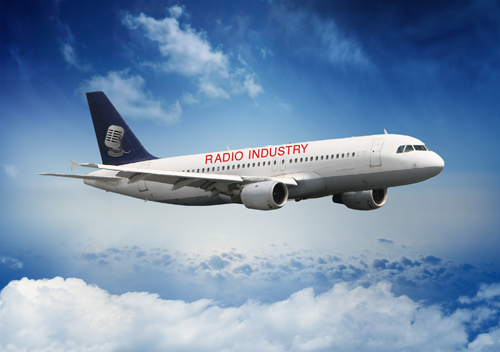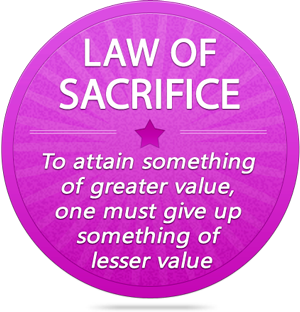The past several years have ushered in an awkward, and often challenging time for broadcasters. On the one hand, many have responded to the inevitable pressures posed by digital media by retrenching, developing, and adapting. With each passing year, radio companies – commercial and public – have invested in assets from streams to apps to podcasts to social media – with varying results.
Admittedly, some efforts have been better and more successful than others. I have likened the challenge facing radio as having to fix the airplane while it’s flying at 35,000 feet. As opposed to a startup building infrastructure and staff from scratch, radio broadcasters have had to make many of these adjustments while faced with ongoing financial pressure to make the quarter and hit budget.
Part of the issue has revolved around revenue. The “analog dollars versus digital dimes” mantra has been uttered by many broadcasters in frustration over the inability to cash in on new media investments.
 And the pressure to perform has made its way to the programming side of the ledger as well. As stations have continued to build digital assets, there’s been a clear tendency to curtail on and off-air promotion of streams, podcasts, and everything else for fear they will drive audiences away from the transmitter and the tower.
And the pressure to perform has made its way to the programming side of the ledger as well. As stations have continued to build digital assets, there’s been a clear tendency to curtail on and off-air promotion of streams, podcasts, and everything else for fear they will drive audiences away from the transmitter and the tower.
And while the practical concerns of making ratings are front and center in every programmer’s mind, the long-term goals of providing great content wherever and whenever consumers want it creates a true digital dilemma.
Interestingly, last week provided indications this conundrum has made its way into both the conference rooms of public and commercial radio stations and networks.
Exhibit A is an NPR memo that stirred up a lot of emotions from both the network and its affiliates. The issue involves NPR podcasts and how to market them. Nieman Labs published an NPR memo written by Chris Turpin, their VP for news programming and operations.
In the memo, he describes the policy for how NPR podcasts will be promoted by network hosts, stressing the need to be “informational, not promotional.” Additionally, the decision was made not to promote the NPR One app – which serves up stories and features that have already aired – as well.
With these guidelines, NPR is taking steps to protect its affiliates. As the NPR Ombudsman, Elizabeth Jensen, postulated in an article called “Why NPR Changed How It Talks About Podcasts,” the policy implicitly suggests that content from shows should be accessed by local public listeners on the radio, rather than attempting to “bypass that channel of listening: i.e., through the (NPR One) app, or digital podcasts.”
The critical reaction that stirred up social media channels came from Joshua Benton, director of the Nieman Journalism Lab, and revolved around this quote:
“The public radio giant is letting its present impose a strategy tax on its future.”
Benton notes that one way to define a “strategy tax” is a policy that is about hurting the success of a product – in this case, podcasts – in order to advance the larger corporate goal.
He talks about the dilemma that traditional media outlets often face where – in this case – “a radio listener is more valuable…than a digital listener.” Benton goes on to discuss the dichotomy of NPR investing in podcast development, but restricting its hosts from directing listeners where to find them.
And then there’s the NPR One app. We showcased it last year in a post in our “Radio’s Most Innovative” series. It has been referred to by former NPR CEO Gary Knell as “a Pandora for news.” The app combines the best of NPR programs, with local station news and produced features. And for the time being at least, it falls under these “do not promote” guidelines.
So while NPR has led the industry in podcasting and now an app that creates a whole new way to enjoy public radio content, these innovations are being subdued by the political pressures that every network organization faces at one time or another. The balance between what is good for NPR versus what benefits the local stations is at the center of trying to determine the best and most equitable course of action.
For commercial radio, the pressure are more practical. Whether it’s Z100 in New York City or a country station in Nome, everyone in commercial radio can appreciate the horns of NPR’s dilemma, because it is pervasive on that side of the industry aisle, too. Station streaming, podcasts, and apps are part of the new array of tools in the digital arsenal. But in most cases, broadcasters have been reluctant to actively talk about them for fear of driving listeners off the air and to smarthphones and tablets. The pressure to maximize every meter and diary is palpable, especially given the challenge of connecting with relatively small numbers of listeners in Nielsen households.

And yet, the toothpaste is indeed out of the tube. Each year, our Techsurveys continue to show growing percentages of radio audiences somehow finding digital content – despite radio’s hesitation to aggressively promote it. More and more consumers – and not just Millennials – have learned how to use their smartphone apps, stream, and listen to on-demand programming.
This year’s Techsurvey12 – formally presented at the Worldwide Radio Summit in L.A. next month – will show that the digital beat goes on. Podcasting, in particular, has been on a growth spurt, perhaps fueled ironically by public radio’s breakout show, “Serial.” But how much larger could digital audiences be if stations more actively marketed their streams, podcasts, and apps with the same weight as the “$1,000 a day” spring promotion?
And that’s why Nielsen’s big announcement last week – the one that has been talked about for what seems like years – oddly seemed to come out of the blue. Nielsen’s Digital Audio Ratings is the long-talked-about cross-platform solution to the measurement problem that has perplexed radio operators, as well as advertisers, for years.
The Nielsen SDK – or software development kit – is the code that’s baked into apps and web players. Our mobile apps company, jācapps , was the first to jump on board because the quest for total audience ratings is so critical to radio’s future.
The Nielsen goal is to measure terrestrial radio listening along with digital consumption of streams on devices like smartphones, tablets, and computers, starting first in PPM markets, and then expanding to diary markets. Measurement of on-demand audio, including podcasts, is also in development. The Nielsen plan is to designate its February and March 2016 surveys as a pre-currency period, followed by numbers that count in April.
So soon enough, we’ll learn how much listening has been left on the table. How comprehensive this measurement will be, who will subscribe to the service, and how will it be accepted by advertisers are the burning questions that can only be answered over time. Nielsen obviously felt that now was the best time to finally launch this much-talked-about initiative.
But the long term issue comes down to whether radio programmers will now be confident enough to actively and aggressively promote their streams, pointing to different devices and access points. Taking digital from the afterthought it’s been, and making mobile, computers, and tablets the core pathways they are for so many people is the long-term goal to help radio survive and thrive.
The digital dilemma that radio has faced for years has created uncomfortable political and practical challenges for broadcasters, from NPR on the one hand to the biggest commercial radio companies on the other. From Kodak to Barnes & Noble to The New York Times, traditional companies have faced the pressures to go forward by perhaps stepping back. And they haven’t all made the best long-term decision for their brand.
 Marketers Reis and Trout called it “The Law Of Sacrifice.” Of those 22 Immutable Laws, it is perhaps the most painful to enact. None of us wants to give up any ground in order to progress. But of course, that’s the calculus that every broadcaster is faced with, from iHeartMedia to NPR.
Marketers Reis and Trout called it “The Law Of Sacrifice.” Of those 22 Immutable Laws, it is perhaps the most painful to enact. None of us wants to give up any ground in order to progress. But of course, that’s the calculus that every broadcaster is faced with, from iHeartMedia to NPR.
It’s hard not to believe we’ll look back on these awkward and puzzling times in amazement. This will all sort itself out – in time – as public radio comes to grips with its network vs. local balancing act. And for commercial radio, getting over its short-term fixation on weekly ratings to see the big picture pressure that’s coming from consumers who continue to gravitate to the digital ecosystems, could be eventually solved with more comprehensive measurement.
But no one said it was going to be easy.
Be careful what you wish for, because in fact, we are living in very interesting times.
One additional note: Our good friend and Nielsen VP/Program Services, Jon Miller, suffered a severe skiing accident last week. The family is going to need financial help during this time. To make a contribution, please visit his gofundme page here.
- I Read The (Local) News Today, Oh Boy! - April 15, 2025
- Radio, Now What? - April 14, 2025
- The Hazards Of Duke - April 11, 2025




Fred, thank you for punctuating this point in time. In 1995, I believed that we’d be off our transmitters by now. I might have been a bit rash, but I do believe we are seeing consumers leaving for other delivery services or platforms. The tectonic shifts are still in motion, and they likely will be moving for some time to come. As scary as it seems, we need to build the content system for digital while stretching to continue to try to maintain and build audience for analog. Content. Content. Content.
Thanks, Chris. It IS a challenge, trying to create the best content, make it available on multiple channels, and communicate that to an audience. The conversation continues today on the blog as well.